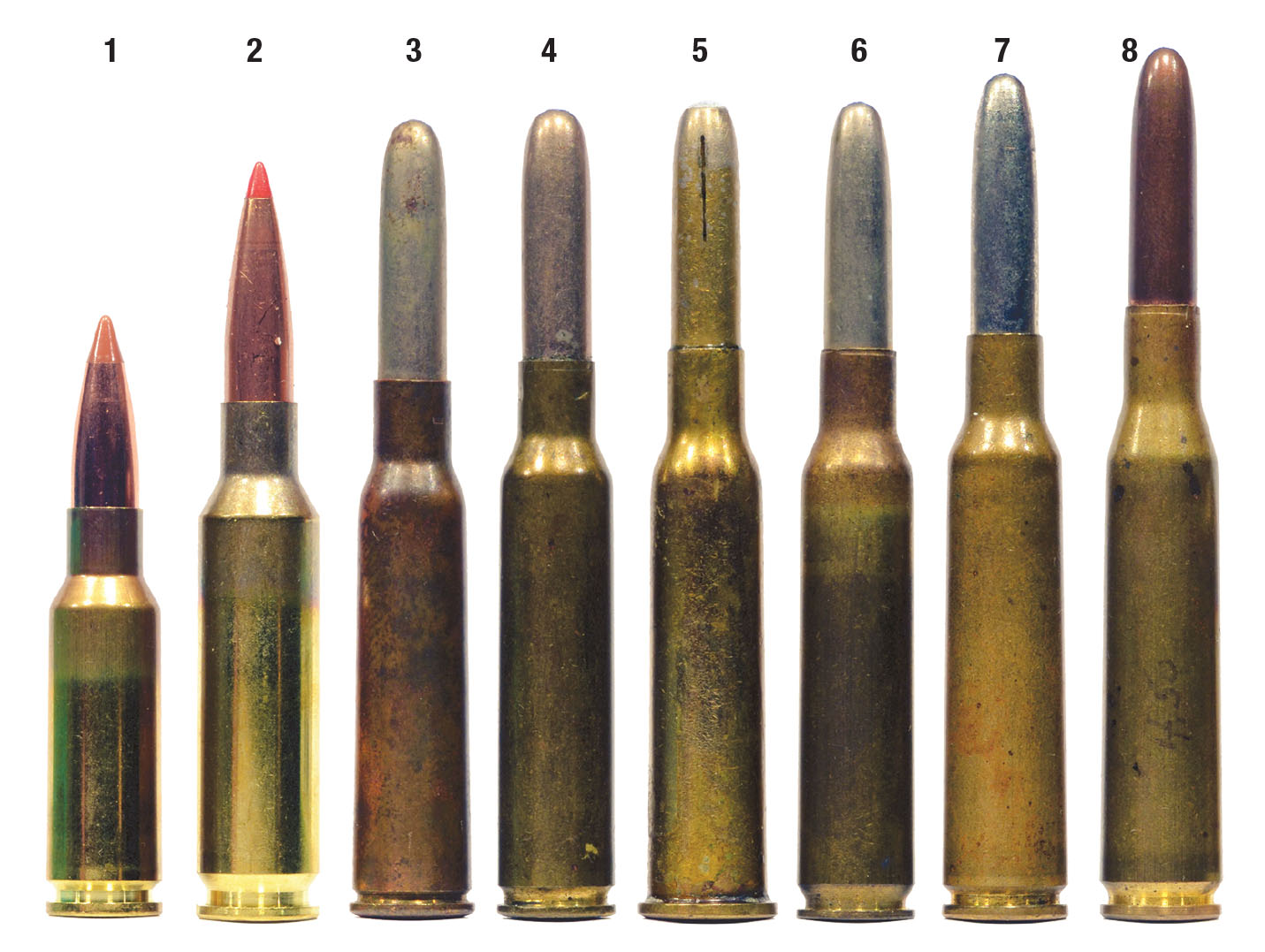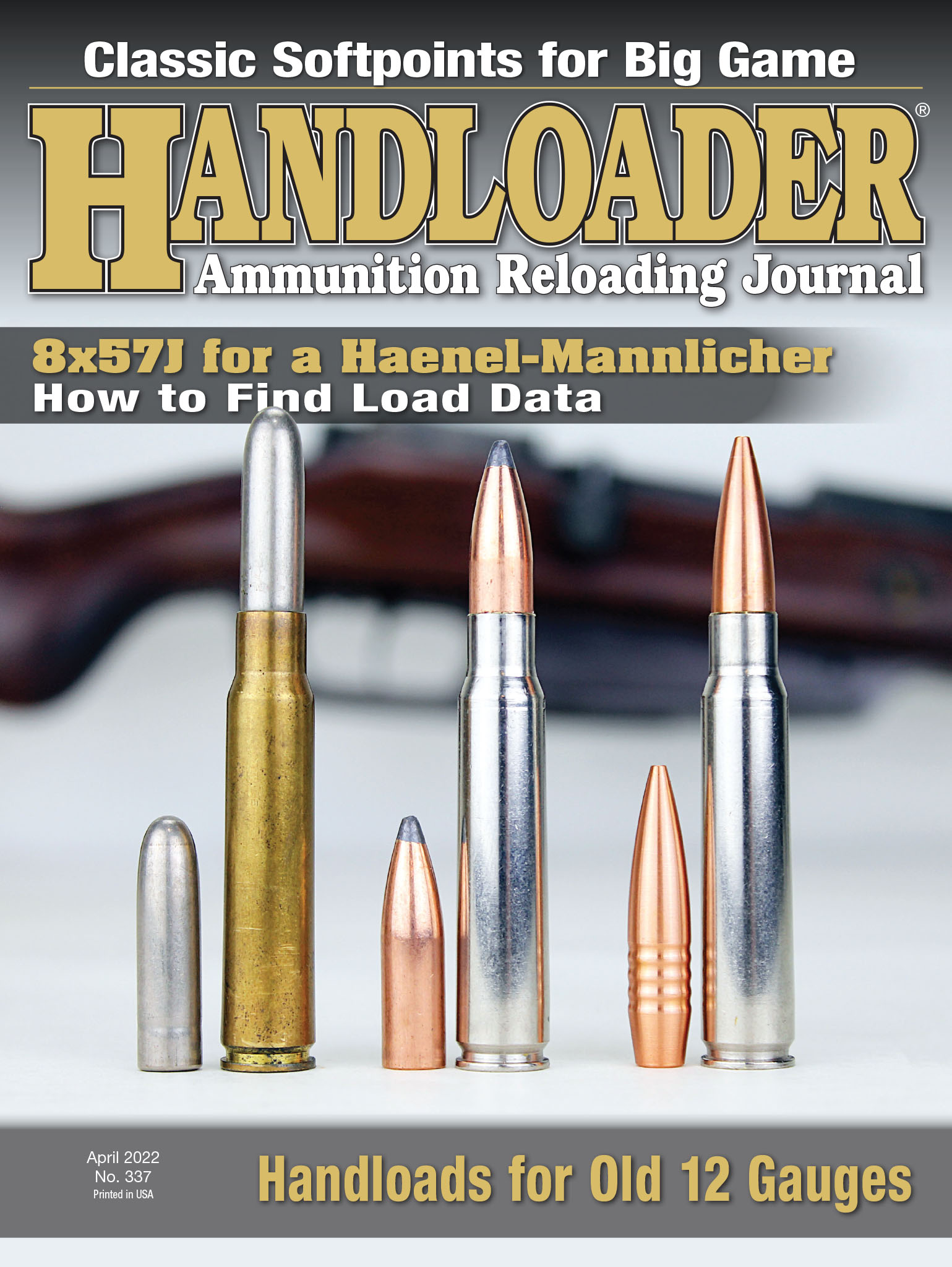In Range
The World's Favorite Caliber
column By: Terry Wieland | April, 22

Considering the fact that 6.5s right now, as a class, are riding the highest wave of any caliber in recent memory, this history is baffling. How could anything so good be ignored for so long?
As with most tales of cartridge introductions and subsequent failures, this one is replete with irony, coincidence, corporate fumbles and sheer bad luck. Much of the blame, however, must be placed on gun writers from 1920 until at least 1990. This is not because they wrote anything outright untrue (well, some did) so much as following, sheep-like, the prejudices of the day.
The main prejudice that worked against the 6.5mm, again and again, was a mindless worship of high velocity, and almost universal condemnation of long, heavy-for-caliber bullets. Since the majority of foreign 6.5s were medium-sized, and relied on “pencil-like” bullets for penetration, they were generally held in contempt.
In Europe, the opposite was true, but Americans have long had a “not invented here” disdain for anything foreign. The British .375 Holland & Holland is really the exception that proves the rule. The only European cartridge I can think of that established a serious foothold was Mauser’s 7x57, and even it was tenuous and sporadic.
The 6.5mm (.264) first appeared in a series of European military rifles, primarily those produced by Steyr-Mannlicher, beginning in the 1890s. During the torrid arms race that preceded the Great War, both Mannlicher and its archrival, Mauser, designed and produced 6.5mm rifles for Sweden, Greece, Portugal, the Netherlands, Italy and Romania, among others. The 6.5x54 Greek was so good, that Mannlicher chambered it in its Model 1903 hunting rifle, which quickly achieved iconic status.
A typical pre-1914 6.5mm military round fired a roundnose bullet weighing 160 grains at a velocity of 2,500 feet per second (fps). Some were higher velocity, some lower; some bullets were heavier and some lighter, but the above figures were about average. Such a combination required an extremely fast twist – typically 1:8 – to stabilize the bullet and achieve acceptable accuracy.
Between 1900 and 1915, several significant events occurred: The .30-06 was introduced, becoming instantly popular, as befits an official military cartridge; Sir Charles Ross developed the .280 Ross, the first commercial cartridge to achieve 3,000 fps; and Savage introduced the .250-3000, the first American cartridge to match the Ross’s velocity. From that point on, the parameters for success were immutable.
Charles Newton, who designed the .250 for Savage, established his own rifle company and set out to design a series of ultra-modern cartridges. These included the .256 (in reality a 6.5mm, named for bore, rather than groove, diameter), a .30 and a .35. The Newton company went under, largely because of the war, but its influence lived on, and not always in a good way.
The .256 Newton was essentially the .30-06, shortened slightly and necked down to 6.5mm. It was loaded by Western Cartridge with a 129-grain bullet at 2,760 fps, and was available for years afterward.
This created a problem for Winchester when, in 1925, it introduced its own new, high-velocity round based on the .30-06 case. Except for Newton, Winchester probably would have gone with the established 6.5mm; instead, it created an entirely new caliber, the .270 (groove diameter .277), and loaded it with a 130-grain bullet that broke the magic 3,000 fps mark. For the next 70 years, every new cartridge that appeared that was even remotely in its class was compared to the .270, and one by one they were found wanting.
Whether this was fair, equitable and accurate is a whole other question; the fact is, nothing could stand against the .270. Only Remington’s 7mm Magnum, when it was introduced in 1962, became a comparable standard chambering, and that was only because it was in a whole new class with a heavier bullet, at a higher velocity, chambered in longer-barreled rifles.
This is not to say the boys didn’t try. After 1945, with the explosion of interest in shooting, there was a comparable growth in wildcatting, and both Remington and Winchester began introducing new cartridges at a rapid clip.
In the 1960s, a new cartridge was a big deal. Introducing one that flopped was also a big deal, given the intense competition between Winchester and Remington. In 1958, Winchester brought out its line of short, belted magnums, which included the .264 Winchester. Originally loaded with a 140-grain bullet at 3,200 fps, it was a world-beater, at least with the 26-inch barrel of the Model 70 Westerner. When the bright lights at Winchester decided they should chamber it in the new Featherweight, with its 22-inch barrel, it became a bucking, bellowing loudmouth that delivered .270 ballistics at best, combined with a shoulder-numbing kick and a muzzle blast that laid the daisies low. One wondered if any of those decision makers ever actually fired one of their products.
Eight years later, Remington followed with a short belted cartridge of its own, the 6.5 Remington Magnum. Evidently, its decision makers had graduated from the same school as their counterparts at Winchester. They chambered it in the Model 600, a bizarre little bolt action that was both a ballistic failure and a stylistic disaster. Its original 18.5-inch barrel did not allow the cartridge to come anywhere near its potential, and lengthening it to 20 inches in the successor Model 660 did not help much. It quietly faded from sight.
After 1945, a flood of military surplus rifles came into the U.S., many of them in one 6.5mm cartridge or another. The 6.5mm Carcano achieved notoriety in the hands of Lee Harvey Oswald, and the subsequent condemnation of that cartridge in particular, military surplus rifles in general, and the consequent Gun Control Act of 1968 didn’t help. Even in the gun press, though, these rifles were – as usual – compared to the .270 and dismissed as mediocre.
A few half-hearted attempts were made to interest the American public in the 6.5x55 Swedish, an excellent cartridge for both hunting and target work, but it never went anywhere.
Logically, two obvious possibilities for a successful 6.5 were necking down the .30-06 and its military successor, the .308. The 6.5-06 became a popular wildcat, and A-Square even attempted to legitimize it as a factory round but everyone asked, how is it better than the .270? Answer: Practically speaking, it’s not.
In 1996, A-Square attempted the same thing with the .308, but for some reason, the resultant cartridge was accepted by the Sporting Arms and Ammunition Manufacturers’ Institute (SAAMI) as the “.260 Remington.”
By all rights, the .260 Remington should have been the screaming success the 6.5 Creedmoor became a decade later. The problem was, Remington seemed to think most users would want a light bullet at higher velocity, when in fact 6.5mm devotees had long recognized the virtues of longer, heavier bullets. Standard .260 Remington rifles were given a twist rate that was too slow to stabilize them at their midrange velocities (typically, a 140-grain bullet at 2,750 fps). The result was a rifle that was neither long-range fish, nor short-range fowl.
There is much more to the story of the 6.5mm cartridges in America, but most of it is sad, and I am nearly out of space.
Suffice to say, it took a company employing serious shooters (Hornady) to look at the situation, figure out the solution, create a whole new cartridge (6.5 Creedmoor) and dictate the right specifications as to bullet weight, optimum velocity and twist rate to finally deliver a 6.5 that could realize the potential that had been there all along.
But, to repeat the question shooters have been asking for nigh on a century, what will it do that the .270 can’t, all things being equal? Answer: Nothing, really – same as it has been for a century.


